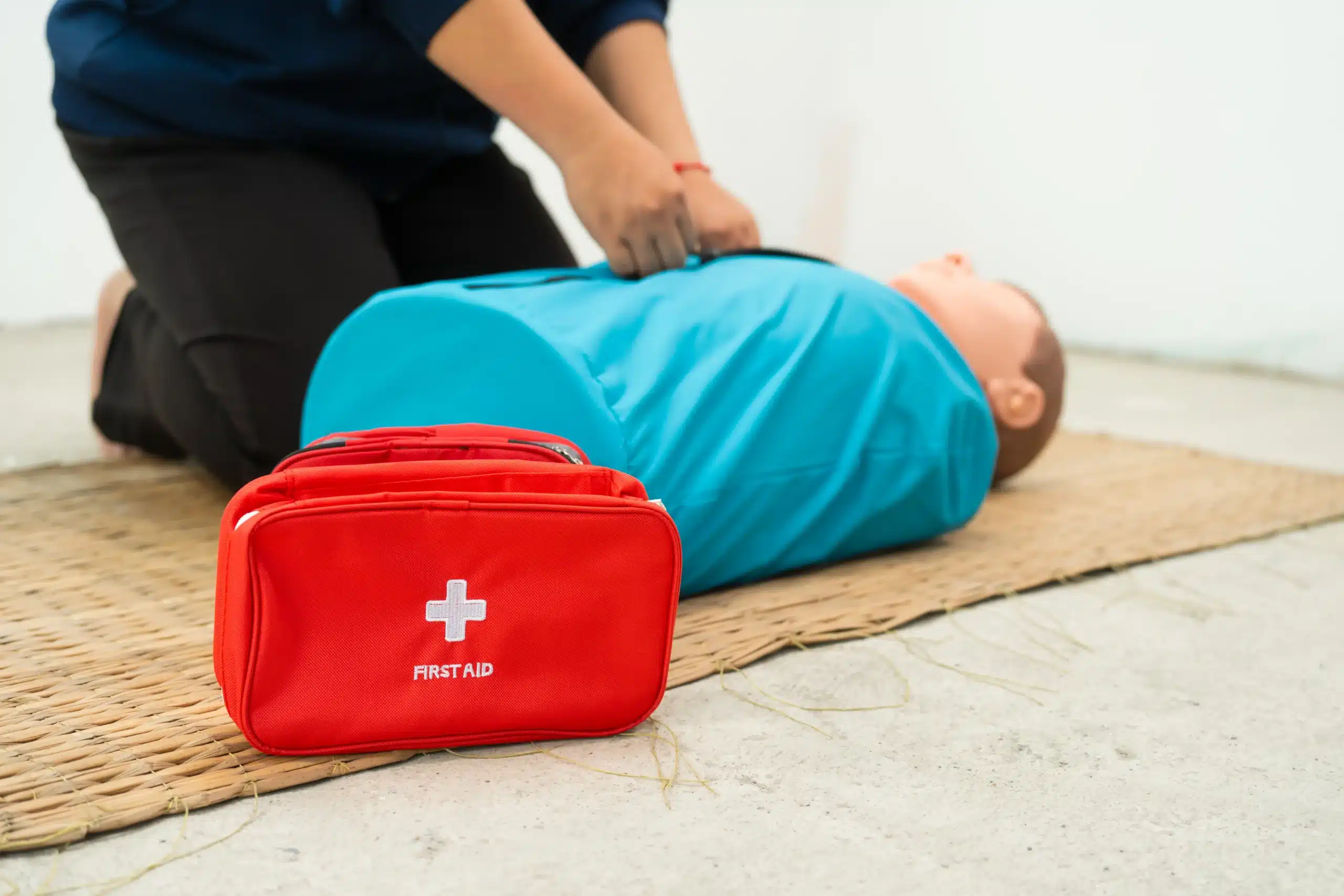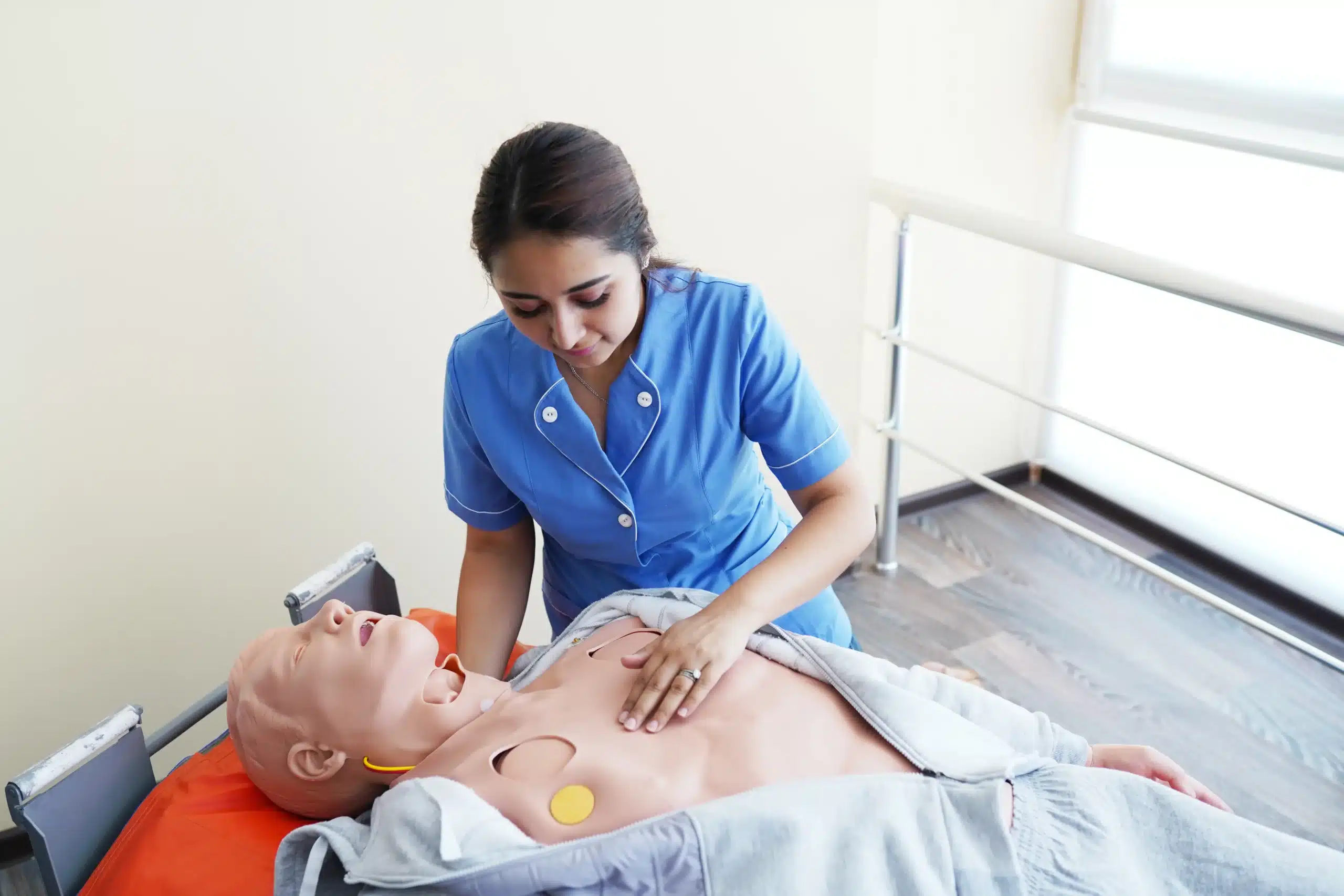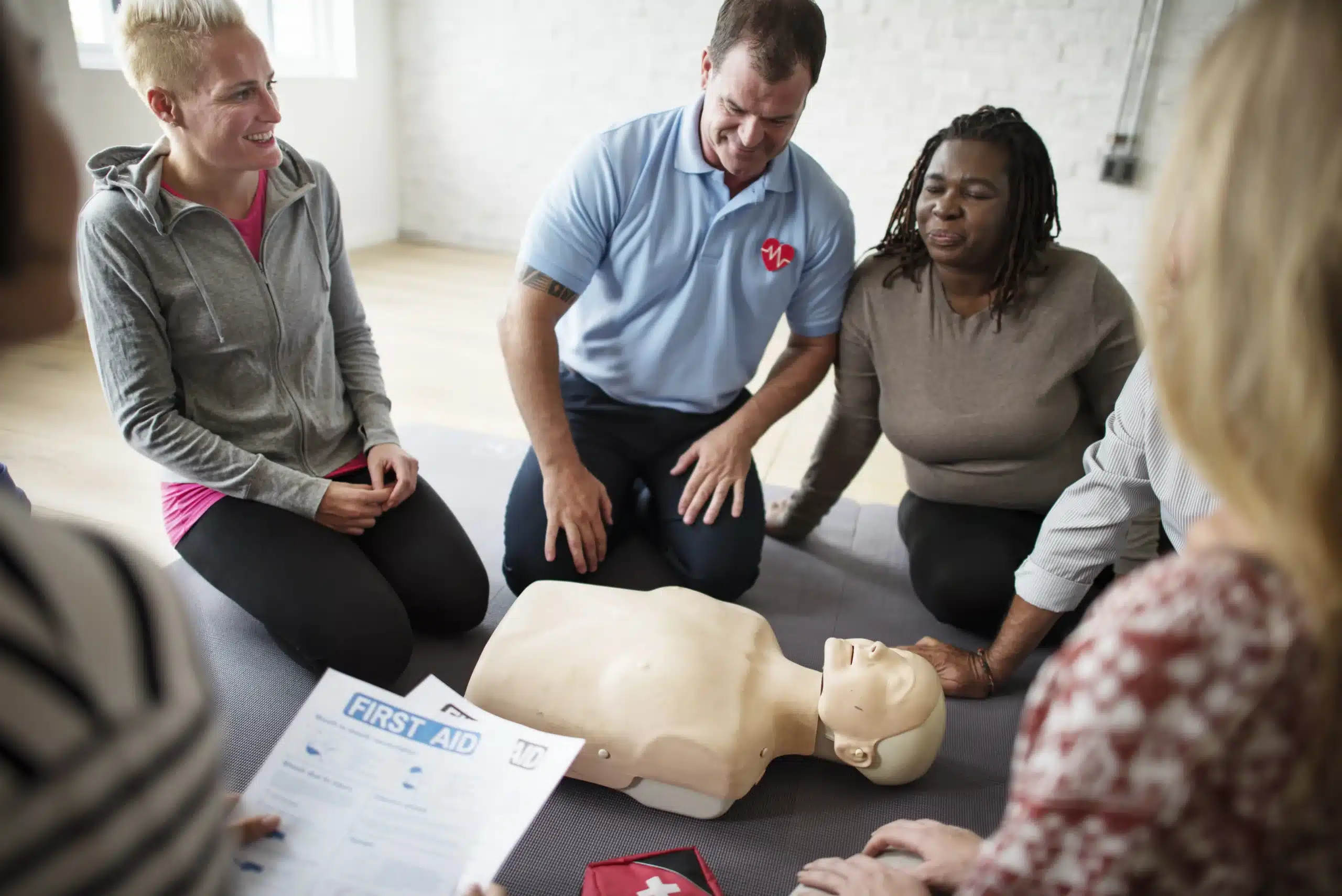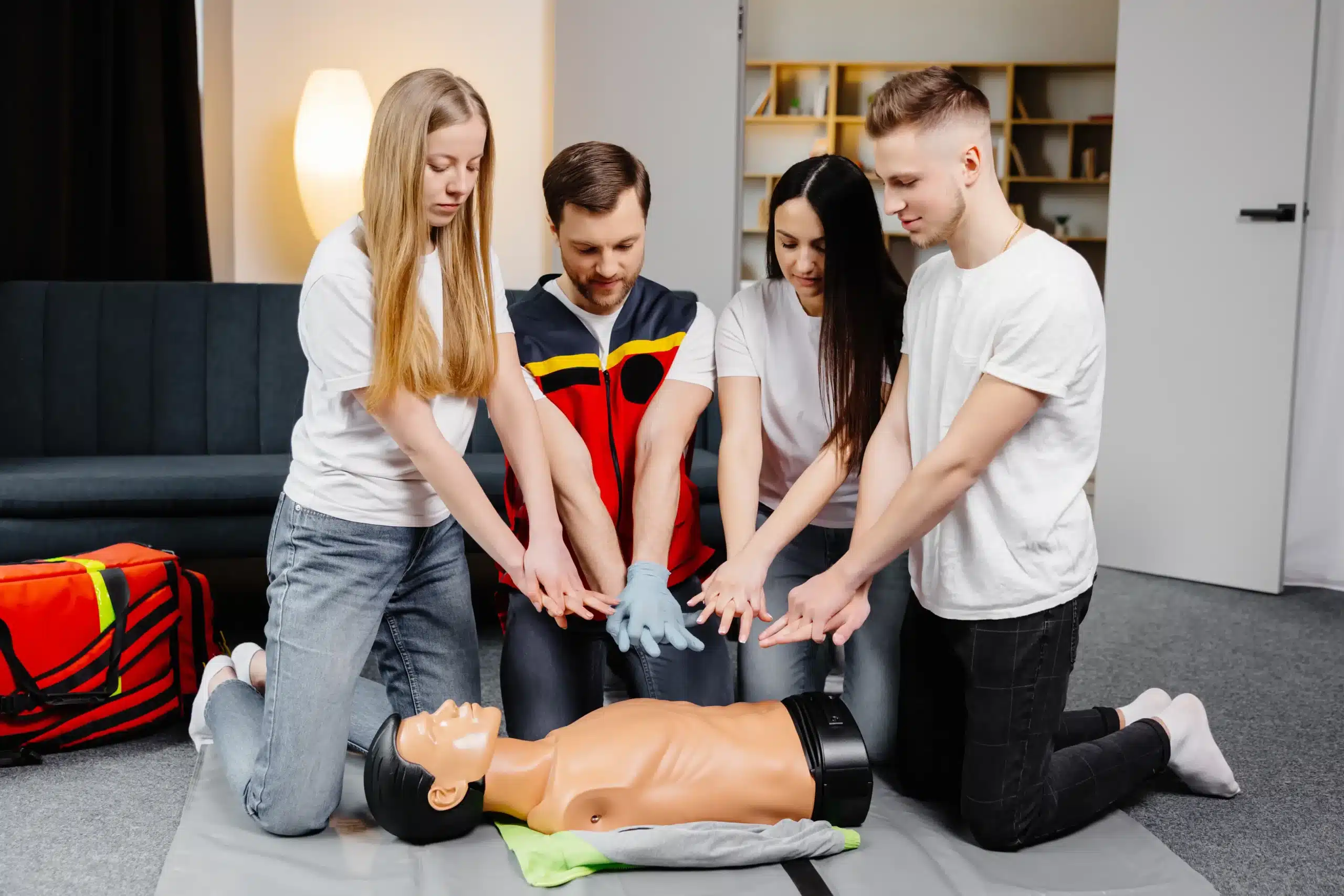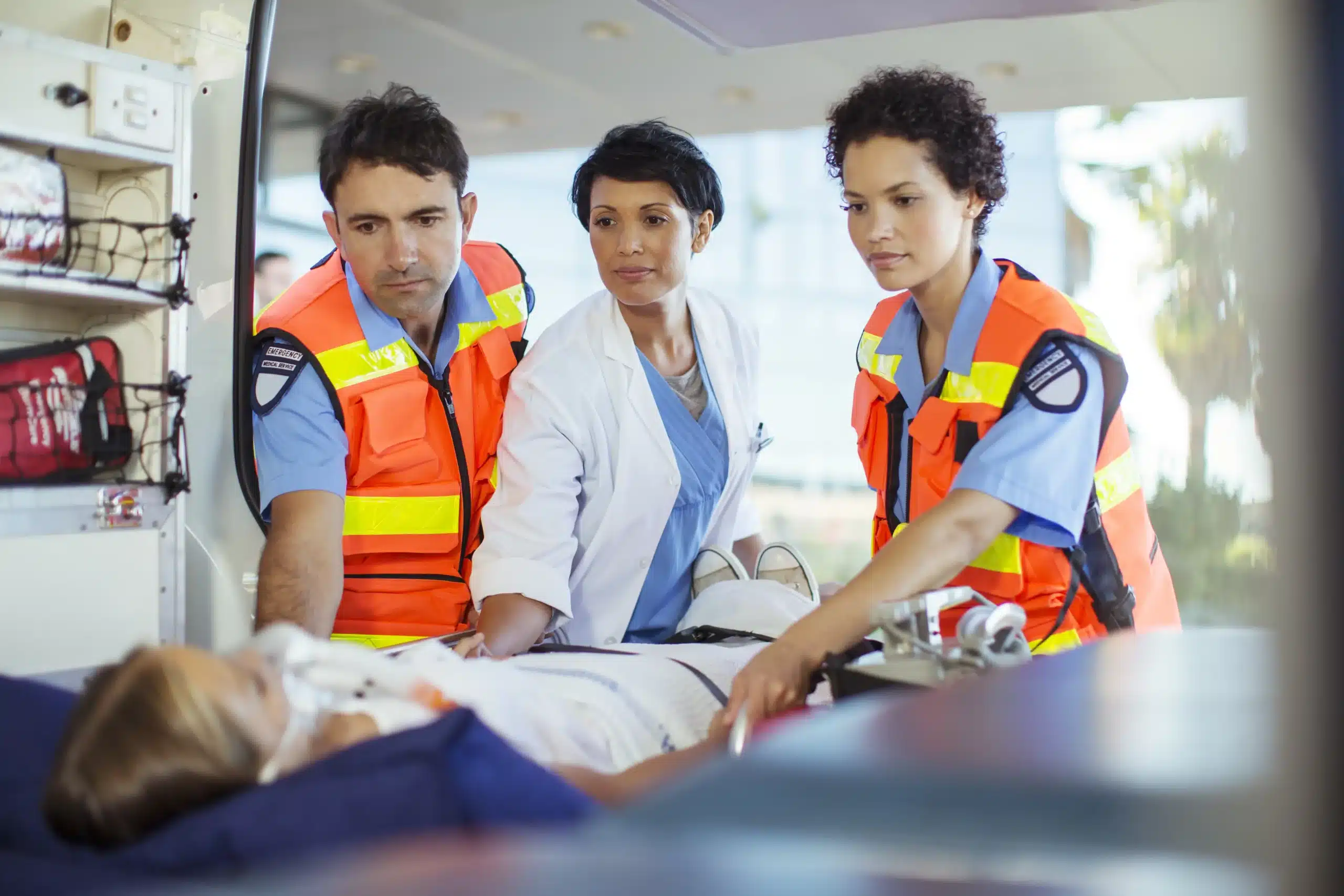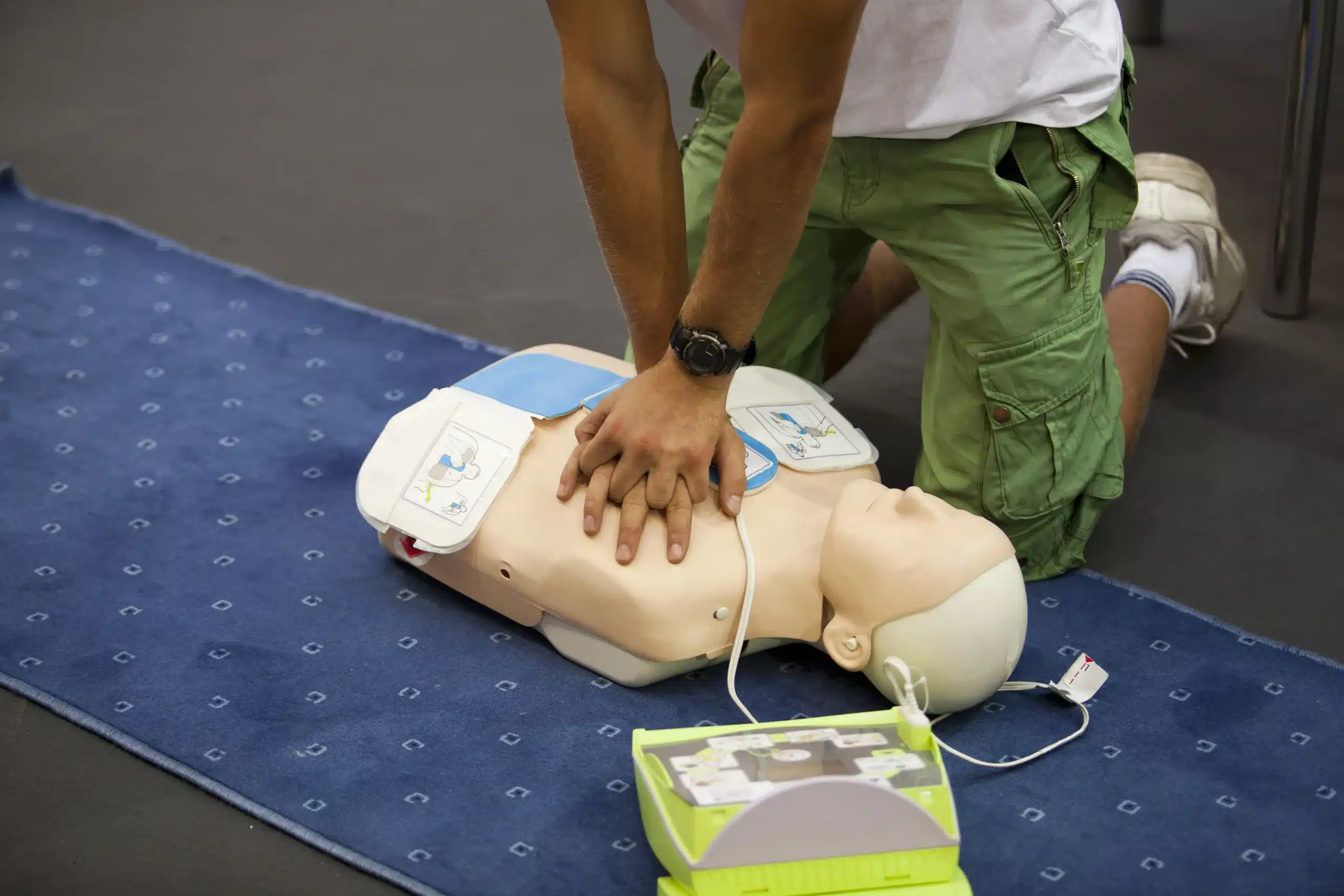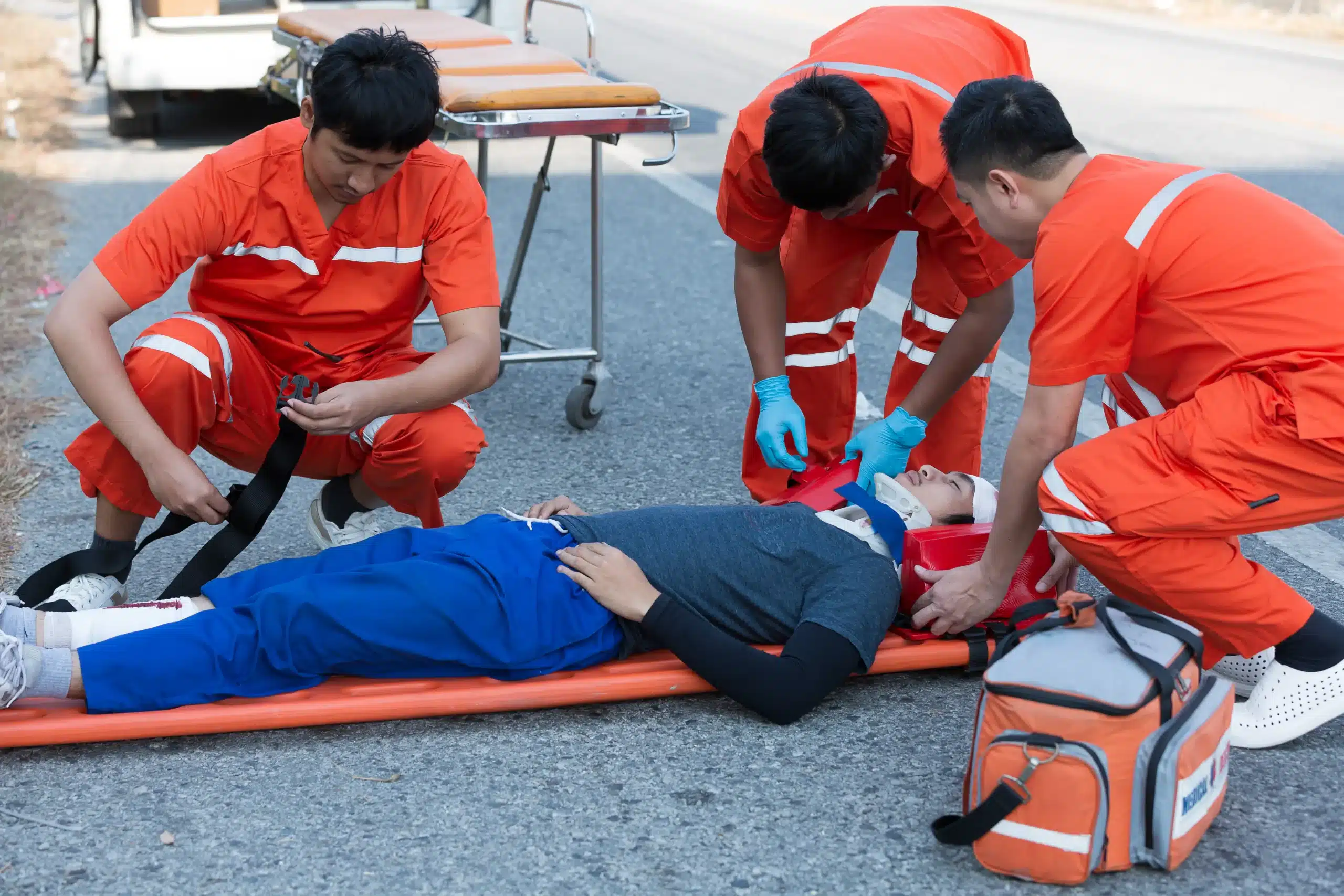Empowering yourself with life-saving skills is one of the most valuable things you can do. This guide simplifies the process of finding the right CPR and first-aid training in San Ramon. We’ll break down the different types of courses, discuss the benefits of online versus in-person training, and provide a list of reputable training providers in the area. Whether you’re a healthcare worker, a parent, or simply someone who wants to be prepared for anything, this guide will help you find the perfect CPR and first-aid training in San Ramon to match your needs and schedule.
Key Takeaways
- Find the right CPR and first-aid training for you: Whether you’re a healthcare provider, work with children, or simply want to be prepared for emergencies, various courses in Dublin, Livermore, and San Ramon cater to different needs and experience levels.
- Consider key factors when choosing a provider: Look for certified instructors, preferably with real-world experience, small class sizes for personalized attention, and convenient locations and schedules. Dublin CPR Classes offers these advantages, along with group discounts and a low-price guarantee.
- Stay current with your skills: CPR and first-aid certifications typically expire every two years. Plan to recertify and explore continuing education options to maintain your skills and confidence in responding to emergencies.
What is CPR and First-Aid?
Cardiopulmonary resuscitation (CPR) is a lifesaving technique used in emergencies, like heart attacks or near drownings, when someone’s breathing or heartbeat has stopped. CPR involves chest compressions and rescue breaths to keep blood and oxygen flowing to vital organs until professional medical help arrives. Learning CPR can dramatically increase the chances of survival in these critical situations.
First aid is the initial help given to someone experiencing a sudden illness or injury. The goal of first aid is to preserve life, prevent the situation from getting worse, and help the person recover. This can range from treating minor injuries like cuts and scrapes to handling more serious problems like broken bones or allergic reactions. First-aid training equips you to handle these situations effectively.
Together, CPR and first-aid training give you the skills to confidently respond to emergencies. These skills can save lives and improve the outcome for anyone needing immediate care. Explore our CPR and first-aid classes in Dublin, California, to learn more.
CPR and First-Aid Training Options in San Ramon
Finding the right CPR and first-aid training can feel overwhelming with so many options. This guide breaks down the different courses available in San Ramon, so you can choose what works for you.
BLS for Healthcare Providers
Basic Life Support (BLS) certification is essential for healthcare professionals like doctors, nurses, paramedics, and other medical personnel. BLS courses cover core life-saving skills for adults, children, and infants, including CPR, AED use, and relieving choking. Dublin CPR Classes offers American Heart Association-certified BLS training designed for healthcare providers. These courses give professionals the knowledge and skills to respond confidently during emergencies in various healthcare settings.
ACLS
Advanced Cardiovascular Life Support (ACLS) training builds on BLS. It’s designed for healthcare providers involved in managing cardiopulmonary arrest or other cardiovascular emergencies. ACLS certification covers advanced airway management, pharmacology, and team dynamics during resuscitation.
PALS
Pediatric Advanced Life Support (PALS) certification focuses on the specific needs of infants and children during medical emergencies. PALS courses teach healthcare providers how to recognize and manage respiratory distress, shock, and other pediatric emergencies. This training is crucial for pediatricians, pediatric nurses, EMTs, and other healthcare professionals working with young patients. Local training providers offer more information about PALS courses.
Heartsaver CPR AED
Heartsaver CPR AED courses are for anyone who wants to learn CPR and how to use an AED. These courses are suitable for community members, teachers, coaches, and anyone wanting basic life-saving skills. The American Heart Association RQI program is a convenient way to get your Heartsaver CPR AED certification.
First Aid Basics
First-aid training teaches essential skills to manage common injuries and illnesses, like cuts, burns, sprains, and allergic reactions. Knowing basic first aid can help you provide immediate care until professional medical help arrives. First-aid certification courses in San Ramon cover various topics, including wound care, bleeding control, and recognizing the signs of a medical emergency.
Pediatric First Aid, CPR & AED
This combined course covers pediatric CPR, AED training, and first aid for infants and children. It’s a good choice for childcare providers, teachers, parents, and anyone regularly interacting with young children. Pediatric First Aid, CPR & AED certification meets California’s requirements for childcare teachers and provides valuable skills to respond effectively to emergencies involving children.
Top CPR and First-Aid Training Providers in San Ramon
Finding the right CPR and First-Aid training provider is crucial for receiving quality instruction and gaining the confidence to respond effectively in emergencies. Here are some reputable training centers in San Ramon:
Dublin CPR Classes
Dublin CPR Classes offers various American Heart Association-certified courses, including BLS, ACLS, PALS, and First Aid. They focus on providing affordable, high-quality training with a dedicated customer service team. Conveniently located for those in Dublin, Livermore, and Pleasanton, they offer group discounts and flexible scheduling.
CPR Education
CPR Education specializes in CPR and First-Aid training for individuals and businesses in San Ramon. Their instructors are active firefighters, bringing real-world experience to the classroom. Visit their website for current course schedules and registration.
Heart Start CPR
Heart Start CPR offers comprehensive training options, from basic CPR and First Aid to advanced certifications like ACLS and PALS. As an American Heart Association-certified training center serving the broader Bay Area, they have a range of courses to meet diverse needs. Learn more about their programs on their website.
CPR Training Center
With nearly three decades of experience, CPR Training Center offers a wide selection of courses, including BLS, ACLS, PALS, and NRP. They are an American Heart Association-certified training center, with courses in San Ramon tailored to healthcare professionals and the general public. Visit their website for details.
Safety Training Seminars
Safety Training Seminars delivers American Heart Association-certified courses in BLS, ACLS, PALS, CPR, and First Aid. They emphasize practical skills and provide training in San Ramon. Find additional information on their course offerings on the Bay Area CPR website.
Bay Area CPR
Bay Area CPR offers a variety of CPR and First-Aid classes in San Ramon, including BLS, ACLS, and PALS certifications. Focused on accessible and practical training, they aim to equip participants with the skills and confidence to handle emergencies. Explore their website for more information on available programs.
What to Expect in a CPR and First-Aid Course
Knowing what to expect can help you feel prepared and confident going into your CPR and first-aid training. Here’s a breakdown of what a typical course covers:
Course Duration and Format
CPR and first-aid courses in San Ramon offer flexible options to fit your schedule. You can choose from traditional in-person classes, blended learning (a combination of online and in-person sessions), or entirely online programs like the American Heart Association’s RQI. The RQI program is particularly convenient for busy healthcare professionals seeking BLS, ACLS, and PALS certifications. In-person courses typically range from a few hours for basic CPR to a full day for more comprehensive training that includes first aid. Blended learning formats allow you to complete the theoretical portion online at your own pace, followed by a shorter in-person session for hands-on skills practice. Individual class prices will vary based on the provider, format, and certification level.
Hands-on Practice
CPR training is a hands-on experience. You’ll learn the essential skills to respond effectively in emergencies through demonstrations, practice scenarios, and interactive exercises. Expect to practice chest compressions, rescue breaths, and how to use an automated external defibrillator (AED) on manikins. First-aid training will cover topics like wound care, treating burns, managing fractures, and recognizing the signs of a stroke or heart attack. These practical skills are crucial for providing immediate care and potentially saving lives. CPR training equips individuals and the wider community with the tools to respond confidently during emergencies. Comprehensive CPR and first-aid certification is vital for anyone working in healthcare.
Certification Process and Validity
Upon successful completion of your CPR and first-aid course, you’ll receive a certification card. Most certifications are valid for two years, such as those offered by Heart Start CPR. This certification demonstrates your competency in these life-saving skills. Remember that maintaining your certification through renewal courses is essential for staying up-to-date with the latest guidelines and best practices. Advanced certifications like ACLS are designed for healthcare providers who play a direct role in patient resuscitation, both in and out of the hospital setting.
Costs of CPR and First-Aid Training
Knowing the cost of CPR and First-Aid training is key to choosing the right course. Pricing depends on several factors, including the type of certification, whether you choose in-person or blended learning, and if you’re training individually or with a group. Let’s break down the different cost considerations.
Individual Course Pricing
Individual course prices for CPR and First-Aid training in San Ramon vary depending on the certification level. Basic CPR and First-Aid classes are generally less expensive than advanced certifications like BLS for Healthcare Providers or ACLS. Check directly with training providers like Dublin CPR Classes or Safety Training Seminars for up-to-date pricing. Many providers list prices on their websites.
Group Discounts and Corporate Rates
If you need to train a group, like colleagues or a community organization, look for group discounts and corporate rates. Many CPR training providers in San Ramon, including Dublin CPR Classes, offer lower per-person prices for group bookings. This can be a budget-friendly way to get everyone certified together. Contact providers directly to discuss your group’s needs and potentially negotiate pricing.
Low Price Guarantees
Some CPR training providers offer low price guarantees, promising to match or beat competitor prices. Dublin CPR Classes offers competitive rates and a commitment to affordable training. If you’re watching your spending, researching providers with low price guarantees can help you find the best value. Remember to compare not only the price but also the course content, instructor qualifications, and overall value.
Online vs. In-Person Training
Choosing between online and in-person CPR and first-aid training depends on your learning style and schedule. Both formats have advantages, and understanding these differences helps you make the best choice. There are even hybrid options that combine the best of both worlds. Let’s break down the pros and cons of each.
Benefits of Online Learning
Online learning offers flexibility and convenience. You can learn at your own pace and revisit material as needed. This format often works well for busy professionals, parents, or anyone with a packed schedule. Many providers, including Dublin CPR Classes, offer the American Heart Association’s RQI program, which combines online coursework with in-person skills sessions. This lets you complete the cognitive portion of the training from anywhere, at any time.
Advantages of In-Person Instruction
In-person training provides a structured environment with direct interaction with a certified instructor. This allows for immediate feedback and the opportunity to ask questions. In-person classes combine lecture with hands-on skills sessions, ensuring you develop the muscle memory and confidence to perform CPR and first aid effectively. This direct interaction can be especially helpful for kinesthetic learners.
Hybrid Options
For those seeking a balance, hybrid courses offer an ideal solution. These programs typically involve completing the cognitive portion online, followed by an in-person skills session to practice and demonstrate proficiency. Dublin CPR Classes offers a variety of American Heart Association courses, including CPR, BLS, ACLS, and PALS certifications, with flexible options. This blended approach lets you learn the material at your own speed and then receive personalized instruction and feedback. It’s a great way to maximize learning and ensure you’re prepared for any emergency.
Choose the Right CPR and First-Aid Course
Knowing which CPR and First-Aid course best suits your needs can feel overwhelming with so many options. This section breaks down the best choices for different groups, making it easier to find the perfect training.
For Healthcare Professionals
Healthcare providers, such as doctors, nurses, and EMTs, need specialized training that goes beyond the basics. Look for courses like the American Heart Association’s Basic Life Support (BLS) for Healthcare Providers certification, covering advanced techniques like using a bag-valve mask and two-rescuer CPR. Advanced Cardiovascular Life Support (ACLS) courses are also crucial for professionals who manage respiratory and cardiovascular emergencies. These courses equip you with the skills to handle complex situations and provide high-quality patient care. Dublin CPR Classes offers various courses designed for healthcare professionals, ensuring you meet the required standards.
For Childcare Providers
If you work with children, a pediatric-focused course is essential. California requires childcare providers to hold specific certifications, often including pediatric CPR and First Aid. Pediatric First Aid, CPR, and AED training covers how to respond to emergencies involving infants and children, including choking, allergic reactions, and injuries. These specialized courses provide the skills and confidence to handle emergencies effectively in a childcare setting. Check with your licensing agency to confirm the exact requirements for your location. Dublin CPR Classes can help you find the right course.
For the General Public and Families
Even without a healthcare or childcare background, learning CPR and First Aid is invaluable. Consider a Heartsaver CPR AED course, which teaches basic life-saving techniques for adults, children, and infants. Adding a First Aid component to your training will prepare you for common injuries like cuts, burns, and sprains. These courses empower you to respond effectively in emergencies and potentially save a life. Dublin CPR Classes offers courses designed for the general public, making gaining these essential skills easy. Check out their low price guarantee for affordable options.
Instructor Qualifications and Training Quality
When your health or the health of a loved one is on the line, you want the best possible training. Choosing CPR and first-aid classes with qualified instructors and a supportive learning environment is key. This section explores what to look for in San Ramon CPR and first-aid training programs.
San Ramon CPR Instructor Expertise
The quality of your training hinges on your instructor’s experience and expertise. Look for classes in San Ramon taught by active firefighters, paramedics, EMTs, or other experienced healthcare professionals. These instructors bring real-world experience to the classroom, offering valuable insights and practical knowledge beyond the textbook. Dublin CPR Classes uses instructors who are active firefighters, ensuring high-quality, practical instruction. Heart Start CPR also staffs its courses with experienced professionals, including firefighters, paramedics, and EMTs. This level of expertise can significantly impact your confidence and ability to perform CPR effectively during a real emergency.
Learning Environment and Teaching Methods
A positive learning environment is just as crucial as a qualified instructor. Look for smaller class sizes, which allow for more personalized instruction and a low-stress atmosphere. This is especially helpful for those who may feel anxious learning these life-saving skills. Heart Start CPR emphasizes small class sizes for personalized attention. CPR Training Center focuses on creating low-stress learning environments taught by healthcare providers. A comfortable learning environment helps you absorb information more effectively and build the confidence to act decisively in an emergency. CPR Education prioritizes building students’ confidence in saving lives. This focus on practical application and confidence-building is a hallmark of quality CPR and first-aid training.
Maintain Your CPR and First-Aid Certification
Keeping your CPR and First-Aid skills sharp is crucial for responding effectively in emergencies. This section covers how to maintain your certifications and continue learning.
Renewal Requirements
CPR and First-Aid certifications typically expire every two years. This renewal cycle ensures your skills and knowledge align with the latest guidelines from organizations like the American Heart Association. Check your certification card for the expiration date and plan to recertify before it lapses. Dublin CPR Classes offers various courses, including BLS certification for healthcare providers, to help you stay current.
Continuing Education Options
Even if your certification isn’t due for renewal, ongoing education can increase your confidence and preparedness. The American Heart Association’s RQI program provides a flexible way to maintain your BLS, ACLS, and PALS certifications through online learning and hands-on skills sessions. This blended learning approach lets you refresh your knowledge and skills conveniently. For those who prefer a classroom setting, Dublin CPR Classes offers continuing education courses in Dublin, Livermore, and San Ramon. They also offer group discounts for businesses and organizations. You can find additional CPR training resources in Northern California through our directory.
Common CPR & First-Aid Training FAQs
This section addresses some of the most common questions people have about CPR and first-aid training in San Ramon. Hopefully, these answers clear up any confusion.
How long are the CPR and first-aid classes? Class duration varies depending on the specific course. For example, a San Ramon in-home CPR class offers flexible scheduling. You can find more information on CPR class lengths and options available in San Ramon through providers like In Home CPR.
Can I perform CPR on someone with a pacemaker? Yes, you absolutely can and should still perform CPR on someone with a pacemaker. The technique doesn’t change. This is a common concern, but standard CPR procedures apply. For more details about CPR and pacemakers, see these common CPR questions.
Does CPR technique change if someone has had bypass surgery? No, the basic CPR technique remains the same, even if someone has had bypass surgery. For further clarification on this and other CPR-related questions, InPulse CPR offers helpful information.
Why is CPR and first-aid training important for my community? CPR and first-aid training are vital for everyone in San Ramon. In emergencies, trained individuals can provide immediate assistance before professional help arrives. This community reliance on trained residents and businesses is crucial in those critical moments following an incident. Learn more about the importance of San Ramon CPR training.
Related Articles
- CPR Courses in San Ramon: Find the Right Class for You – Dublin CPR Classes
- First-Aid Training in San Ramon: Your Complete Guide – Dublin CPR Classes
- BLS Classes in San Ramon: Your Complete Guide – Dublin CPR Classes
- ACLS Renewal in San Ramon: Your Guide – Dublin CPR Classes
- Online PALS Classes in San Ramon: Certification Guide – Dublin CPR Classes
Frequently Asked Questions
What if I’m nervous about performing CPR in a real emergency? It’s completely normal to feel apprehensive. CPR classes emphasize hands-on practice and realistic scenarios to build your confidence. Instructors create a supportive learning environment where you can ask questions and practice until you feel comfortable. Remember, any attempt at CPR is better than none.
How do I choose the right CPR class for me in San Ramon? Consider your specific needs and goals. Healthcare providers need certifications like BLS, ACLS, and PALS. Childcare providers require pediatric-focused training. If you’re looking for general knowledge, a Heartsaver CPR/AED course combined with first aid is a great option. Dublin CPR Classes offers a range of courses to fit everyone.
What’s the difference between online and in-person CPR training? Online courses offer flexibility, allowing you to learn at your own pace. In-person classes provide hands-on practice and direct interaction with an instructor. Hybrid courses combine the benefits of both. Consider your learning style and schedule when choosing a format.
How much does CPR and first-aid training cost? Costs vary depending on the course type, format, and provider. Basic CPR classes are generally less expensive than advanced certifications. Look for group discounts if you’re training with others. Dublin CPR Classes offers competitive pricing and a low-price guarantee.
How can I stay up-to-date with my CPR and first-aid skills after getting certified? Most certifications are valid for two years. Recertification courses ensure you stay current with the latest guidelines. Consider ongoing education opportunities, like the American Heart Association’s RQI program, to keep your skills sharp.


